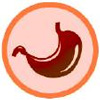The drug DEC (diethyl carbamazine) is the mainstay of therapy for filiariasis. The dose is 6 mg per kilogram of body weight given as a single dose daily. The total duration of treatment is for about three weeks. Ivermectin is another drug that can be used. It is particularly useful against the parasites Bancrofti and Brigia.
What are the side–effects of treatment of Lymphatic Filariasis?
At the start of therapy particularly in the first 24 to 48 hours, there can be fever, chills, nausea, vomiting and joint pains. It is not a direct, toxic effect of the drug but an allergic response of the body to dying parasites. To avoid this, lower doses can be used initially. For those patients whose disease is chronic and have developed elephantiasis, long term low dose DEC is used. Local care of the limb which includes elevation, using stockings or compression bandages to decrease the limb’s swelling may be tried. Diethylcarbamazine (DEC) tablet @ 6 mg./kg. body weight for 12 days is administered for mf. carrier cases present in circulating peripheral blood which can be detected only during night blood survey.
DEC tablets @ 6 mg./kg/ body weight for 7 days in a month is administered.
Foot hygiene, foot care and physical exercise is suggested.
DEC Dosage Schedule
DEC is now supplied to all MDA districts as 100 mg tablets. The drug has been in use in India for more than five decades. It is a very safe drug at the recommended dose. The single dose of 6 mg DEC per kg body weight has to be adjusted and age–wise streamlined dosage is given below:
Drug Dosage Schedule
| Streamlined Dose | ||
| Age in Years | Dose of DEC | Number of Tablets |
| < 2 | Nil | Nil |
| 2–5 | 100 mg | 1 tablet of 100 mg |
| 6–14 | 200 mg | 2 tablets of 100 mg each |
| 15 & above | 300 mg | 3 tablets of 100 mg each |
Note: The advantage of streamlined DEC dosage is that the number of tablets are less and the three doses can easily be remembered by the peripheral drug administrator.
Guidelines on Morbidity Management for Prevention and Control of Disability
Filaria patients with damaged lymphatic vessels often have more bacteria on the skin than usual. The large number of bacteria on the skin, multiple skin lesions, slow lymph fluid movement and the reduced ability of the lymph nodes to filter the bacteria cause inflammation characteristic of an acute attack. Repeated bacterial infections precipitate frequent acute attacks, which further damage the tiny lymphatic vessels in the skin, reducing their ability to drain fluid. This vicious cycle continues, aggravating the condition of the patient.
Good hygiene and treatment of entry leisions are important measures for managing lymphoedema. The patients should be encouraged to practise skin care and hygine and to use proper footwear. The reduction in the frequency of the acute attacks is an indication that the patient's condition is improving. Effective, simple and cheap techniques have now been available to minimize the suffering caused by the acute and chronic manifestations of the disease.
A. Hygine – Washing
1. Supplies needed
- Clean water at room temperature.
- Soap (least expensive soap without perfume is usually the best).
- Basin.
- Chair or Stool.
- Towel.
- Footwear within easy reach.
- Entry lesions, including very small lesions between the toes that can hardly be seen.
- Entry lesions between the toes may cause itching. Scratching can further damage the skin and can provoke an acute attack; tell patients to avoid scratching.
- Toenails should be trimmed in such a way that the skin is not injured. Do not try to clean under the nails with sharp objects as these can cause entry lesions.
3. Wash the leg
- Wet the leg with clean water at room temperature. Do not use hot water to wash the leg.
- Begin soaping at the highest point of swelling (usually around the knee).
- Wash down the leg towards the foot.
- Gently clean between all skin folds and between the toes, preferably using a small cloth or cotton swab, and paying particular attention to the entry lesions. Brushes should not be used as they can damage the skin.
- Rinse with clean water.
- Repeat this careful washing until the rinse water is clean.
- Wash the other leg in the same way, even if it looks normal.
 Wash the leg
Wash the leg4. Dry the skin
- Pat the area lightly with a clean towel. Do not rub hard because this can cause damage to the skin,
- Carefully dry between the toes and between skin folds using a small cloth, gauze or cotton swab.
B. Prevention and cure of entry lesions
- Entry lesions are common in patients with lymphoedema and are most frequently found between the toes and deep skin folds and around the toenails. Entry lesions, such as wounds, can also be found on the surface of the skin. Both fungi and bacteria can cause entry lesions. Fungal infections frequently damage the skin and create entry lesions, especially between the toes, and may cause itching. The entry lesions allow bacteria to enter the body through the skin and this can cause acute attacks. Fungi and bacteria can cause bad odour.
- Fungal infections are usually white or pink in colour and do not leak fluid. Bacterial infections may leak fluid that is thin and clear or thick and coloured.
- Antifungal and antibacterial creams can be used for local application.







